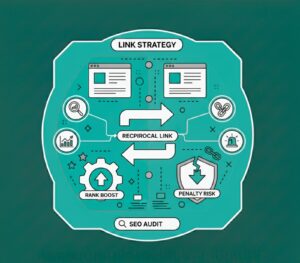Alt Text for SEO: How Google Recommends Optimising Images for Search
Blogs | SEO
Written By: Lauren Davison
Introduction
Have you ever wondered why some websites show up in Google Images while others don’t? The secret often lies in something small but mighty: Alt Text for SEO. Images play a huge role in how people experience a website. They get people’s attention, explain ideas, and make the content better. But if you don’t optimise them correctly, search engines may not see even the best photographs.
Google says that utilising alt text can help photos show up in search results and make site content easier to find. This blog will help you learn how Google recommends optimising images for search engines.
Table of Contents
Understanding Alt Text and Its Role in SEO
Pictures are great, but Google can’t “see” them like humans. Alt text solves that. It tells search engines what’s in your images. It also helps people using screen readers. A small description can make your website more visible and accessible.
What is Alt Text?
Alt text is a short line of text added to an image’s code. It explains what the image shows. Imagine uploading a photo of a red bicycle. If the alt text says:
“Red bicycle with basket,”
Google knows the image content, and users with visual impairments hear the same description. It’s simple, useful, and essential for accessible content SEO.
Why Alt Text Matters for SEO
Good alt text does more than describe. It helps your images appear in Google Image Search. That can bring more clicks and visitors to your site. It also supports overall website engagement. Clear descriptions keep people on your pages longer. They understand your content faster.
Google’s Guidelines for Writing Effective Alt Text
So, what does Google say about writing alt text? Their advice is about being clear, relevant, and in the right context. Use keywords correctly in alt text to naturally explain the image. Google’s Image SEO Best Practices say that alt text should clearly describe images while supporting accessibility.
Keep Descriptions Concise and Relevant
Google says alt text should tell exactly what is in an image. Avoid long sentences. If the image shows “sunset over a mountain,” say just that. Don’t add many unrelated details. This makes your optimisation of images for search efforts stronger.
Use Keywords Strategically Without Overloading
You can use your target words in alt text. For example, if “Alt Text for SEO” is your main keyword, you might write: “Webpage screenshot showing Alt Text for SEO example.” But don’t overuse it. This keeps your alt text readable for everyone.
Best Practices for Optimising Images for SEO
Want your pictures to help you rank higher and make the site better for users? Then use some proven Google image SEO tips to see results.
File Names and Image Formats
The name of the file is important even before you upload an image. Search engines look at file names to figure out what an image is about.
Example:
- Bad file name: IMG000123.jpg
- Good file name: red-running-shoes.jpg
Also, pick formats like WebP or JPEG that strike a good mix between quality and speed. Google really likes it when you compress big files because it makes them load faster.
When you include strong Alt Text for SEO, your image becomes a valuable search asset.
Integrating Alt Text into Overall SEO Strategy
Alt text doesn’t work by itself. It’s a component of a bigger plan for SEO.
- Use relevant titles and meta descriptions to make your plan stronger.
- Make sure that the language on your website fits with the pictures.
- Make sure your keywords are the same on all of your sites and images.
When done correctly, optimising photos for search engines makes the whole site easier to find. Every item, from the file name to the alt text, helps with SEO.
Common Mistakes to Avoid in Alt Text for SEO
If you make little mistakes, it can undo your hard work. When writing Alt Text for SEO, here are some things to avoid.
Keyword Stuffing and Irrelevant Descriptions
If you use too many keywords, your writing may be hard to read. If Google discovers keyword stuffing, it can even reduce your rating.
Example of keyword stuffing:
“SEO image optimisation, SEO alt attributes, best image SEO for SEO website.”
This doesn’t help users or search engines. Instead, describe what’s in the picture. Keep your words natural and clear.
Relevance matters too. Don’t label a picture of a “dog” as “cat” just because “cat” has higher search volume. Google’s smart. It knows the difference.
Skipping Alt Text or Using Generic Phrases
Leaving alt text blank or using phrases like “image123” is a lost opportunity. Google sees this as missing data.
Generic text like “picture” or “photo” adds no value. It’s better to write a few meaningful words than leave it empty.
Example:
- Bad: “Image of product.”
- Good: “Blue cotton T-shirt on a hanger.”
Even a short line can make your content more accessible and boost SEO alt attributes.
Measuring the Impact of Optimised Alt Text
After adding alt text, how do you know it’s working? You can track performance using Google’s free tools.
Using Google Search Console and Analytics
Google Search Console is a great starting point. You can check how often your images appear in searches and how many people click them. It shows which alt texts are helping your content get noticed.
Analytics adds another layer. You can see how visitors interact with pages that have optimised images. Which pictures keep people on your site? Which leads to clicks or purchases?
For instance, an image with clear alt text might appear in Google Image Search more often. That alone can attract visitors who might never have found your page otherwise.
Continuous Optimization
SEO isn’t something you do once. Google’s algorithms alter as trends do. Look over your alt text often.
- Update descriptions that are no longer accurate.
- Add alt text to new photos.
- Look for links that don’t work or attributes that are missing.
Over time, steady progress makes things more visible. Following best practices for picture SEO keeps your material new and useful.
Conclusion
Pictures can say more than words — but only if search engines can understand them. Writing good Alt Text for SEO bridges that gap. It helps both Google and your audience see your images clearly, understand them, and find them easily.
At Midland Marketing, we know small changes can make a big difference. Adding thoughtful alt text isn’t just about better rankings. It’s about creating a web that’s accessible, useful, and follows Google’s picture SEO tips.
We help businesses turn simple images into opportunities for SEO. Every image is treated as part of your brand story, with a focus on clarity, creativity, and strategy. Before uploading your next image, pause. Ask: Does this image help people and search engines alike? With the right words, it can.
Book our experts to see how we can boost your visibility, optimise your images, and grow your online presence.
FAQs
1. What is alt text in simple terms?
Alt text is a short, written description of an image on a website. It tells people and search engines what the image is about, especially if the image can’t be seen.
2. Why is alt text important for SEO?
Alt text helps Google understand your images. This can make your pictures appear in Google Image Search results. This can bring more visitors to your website.
3. How long should alt text be?
It should be a short and clear description. Aim for about 125 characters or fewer. This is just long enough to describe the image without being too wordy.

Written by - Lauren Davison
Introducing Lauren – one of our content writers who has a flair for SEO and creative strategy!
With a Master’s Degree in Creative Writing, Lauren has niched down into SEO and content writing.
Outside of work, she loves watching the darts, reading and the pub on the weekend.
Want some more?
Latest Insights & News

Reciprocal Links in SEO: Do They Still Boost Rankings or Risk Penalties?
For the keyword “reciprocal links SEO,” focus on explaining how reciprocal linking works today. Reciprocal links are not harmful by default, but Google can flag excessive or manipulative link exchanges. To stay safe, only exchange links when they are contextually relevant, natural, and valuable to users.

SEO as the Foundation of Digital Growth: Why It’s More Than Just a Marketing Tactic
When focusing on “SEO for business growth,” highlight how SEO directly contributes to long-term scalability. Modern SEO goes beyond ranking—it boosts brand visibility, qualified traffic, customer trust, and conversion opportunities. To optimize effectively, ensure your content covers user intent, builds topical authority, and leverages technical SEO elements like fast loading, mobile-friendly design, and structured data.

AEO Mastery: Step-by-Step Guide to Building AI Citations & Boosting Visibility
When targeting the keyword “AEO Guide to Building AI Citations & Boosting Visibility,” focus on Authoritative Engine Optimization (AEO) principles. AI-driven search requires clear, structured, and entity-rich content.
